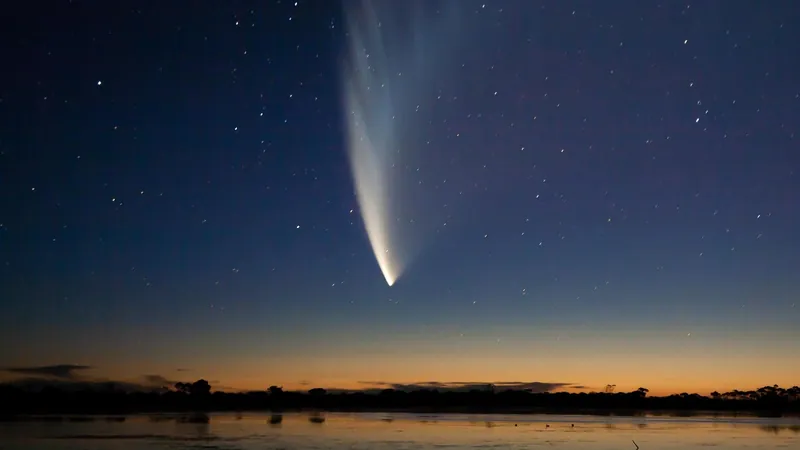
Get Ready! You MUST See These TWO Amazing Comets This Month!
2024-10-06
Excitement is in the air as star-gazers are about to witness not one but TWO spectacular comets lighting up our night skies this October! Astronomers are buzzing over Comet C/2023 A3 (Tsuchinshan-ATLAS) and the newly discovered Comet C/2024 S1 (Atlas), both of which promise stunning views for observers around the world.
Comet C/2023 A3 (Tsuchinshan-ATLAS)
First up, we have Comet C/2023 A3 (Tsuchinshan-ATLAS). This comet has already gone through its perihelion (closest approach to the sun) on September 27 and will zip past Earth on October 12. Don't miss your chance to spot it just after sunset, as it might shine brightly enough to be visible to the naked eye! Look for it alongside a 9%-lit waning crescent moon and the brilliant star Regulus in the constellation Leo. However, be quick! It will begin to fade as it moves away from Earth.
Comet C/2024 S1 (Atlas)
But wait, there’s more! A second comet, C/2024 S1 (Atlas), is also making its approach. Discovered by the ATLAS telescope on September 27, 2024, this massive comet is predicted to reach its closest point to Earth on October 23 and then its perihelion with the sun just five days later, on October 28. On that date, it could be blazing brightly at a dazzling magnitude of -8.3, outshining even Venus!
Optimal Viewing Times
For optimal viewing, those in the Southern Hemisphere and equatorial regions can catch the comet from October 24-28 before sunrise, as it ramps up in brightness. Then, from October 29-31, viewers in the Northern Hemisphere will have a prime opportunity to catch it after sunset as it slips farther from the sun and becomes visible in darkening skies.
Caution!
Caution is advised, however! Comets are notoriously unpredictable, especially as they approach the sun—which adds a thrill to the chase. The key date for C/2024 S1 (Atlas) is October 28; its survival could determine whether the comet dazzles or disappears before many can lay eyes on it.
Final Thoughts
Both of these comets hail from the distant Oort Cloud, a reservoir of icy bodies at the fringes of our solar system. Comet C/2023 A3 (Tsuchinshan-ATLAS), making one of its rare visits back to the inner solar system, has an orbit of about 80,000 years, meaning this might be your only chance to see it in your lifetime!
Don’t miss out on this celestial event! Make sure to grab your binoculars, set your alarms, and prepare for nights filled with wonder. Clear skies and wide eyes await!









 Brasil (PT)
Brasil (PT)
 Canada (EN)
Canada (EN)
 Chile (ES)
Chile (ES)
 España (ES)
España (ES)
 France (FR)
France (FR)
 Hong Kong (EN)
Hong Kong (EN)
 Italia (IT)
Italia (IT)
 日本 (JA)
日本 (JA)
 Magyarország (HU)
Magyarország (HU)
 Norge (NO)
Norge (NO)
 Polska (PL)
Polska (PL)
 Schweiz (DE)
Schweiz (DE)
 Singapore (EN)
Singapore (EN)
 Sverige (SV)
Sverige (SV)
 Suomi (FI)
Suomi (FI)
 Türkiye (TR)
Türkiye (TR)